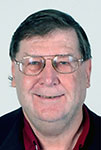Seeing through the dolerite-seismic imaging of petroleum systems, Tasmania, Australia
Malcolm Bendall A , Clive Burrett B , Paul Heath C , Andrew Stacey C and Enzo Zappaterra DA Ardilaun Energy
B Mahasarakham University; University of Tasmania
C Empire Energy Corporation International
D Global Exploration Services Limited
The APPEA Journal 55(1) 297-328 https://doi.org/10.1071/AJ14024
Published: 2015
Abstract
Prior to the onshore work of Empire Energy Corporation International (Empire) it was widely believed that the widespread sheets (>650 m thick) of Jurassic dolerite (diabase) would not only have destroyed the many potential petroleum source and reservoir rocks in the basin but would also absorb seismic energy and would be impossible to drill. By using innovative acquisition parameters, however, major and minor structures and formations can be identified on the 1,149 km of 2D Vibroseis. Four Vibroseis trucks were used with a frequency range of 6–140 Hz with full frequency sweeps close together, thereby achieving maximum input and return signal.
Potential reservoir and source rocks may be seismically mapped within the Gondwanan Petroleum System (GPS) of the Carboniferous to Triassic Parmeener Supergroup in the Tasmania Basin. Evidence for a working GPS is from a seep of migrated, Tasmanite-sourced, heavy crude oil in fractured dolerite and an oil-bearing breached reservoir in Permian siliciclastics.
Empire’s wells show that each dolerite sheet consists of several intrusive units and that contact metamorphism is usually restricted to within 70 m of the sheets’ lower margins. In places, there are two thick sheets, as on Bruny Island. One near-continuous 6,500 km2 sheet is mapped seismically across central Tasmania and is expected, along with widespread Permian mudstones, to have acted as an excellent regional seal.
The highly irregular pre-Parmeener unconformity can be mapped across Tasmania and large anticlines (Bellevue and Thunderbolt prospects and Derwent Bridge Anticline) and probable reefs can be seismically mapped beneath this unconformity within the Ordovician Larapintine Petroleum System. Two independent calculations of mean undiscovered potential (or prospective) resources in structures defined so far by Empire’s seismic surveys are 596.9 MMBOE (millions of barrels of oil equivalent) and 668.8 MMBOE.

Malcolm Bendall has had more than 35 years’ experience in investigating petroleum systems as well as in the investigation of the viability of petroleum resources in Tasmania. Malcolm presently serves as a Director and Chief Executive Officer of the US publicly traded company Empire Energy Corporation International and its subsidiaries. His previous responsibilities have included directing exploration activities across SEL13/98 and EL14/2009, in central Tasmania, Australia. Malcolm also manages employees around Australia, the US and UK, ensures financial and legal compliance with both US and Australian law, and continues to direct international fundraising for Empire and its subsidiaries. Malcolm has worked in a variety of geological capacities, including mine manager, field supervisor and drilling supervisor (among others) for companies including BHP Exploration, Amoco Minerals, Renison Goldfields and Pasminco. During the past 14 years, Malcolm has raised in excess of $110 million for oil and gas and mineral exploration in Tasmania, and has served in a management capacity for eight publicly traded mineral and petroleum exploration companies. He is published in four international petroleum journals, is a Fellow of the Australian Institute of Company Directors, and was named Tasmanian Businessman of the Year in 1989. |

Clive Burrett taught geology at the University of Tasmania from 1970 to 2006, and was Head of the School of Earth Sciences from 1997–2002. He graduated with a BSc (Hons) from the University of London, and has a PhD from the University of Tasmania. Clive is a Fellow of the Geological Society of Australia. He is an expert on the geology of Tasmania, Southeast Asia and China. Clive has supervised many graduate theses on the geology and resources of Southeast Asia and Australia, and consulted to numerous resource companies in the Middle East, Southeast Asia and Australia. Clive is now based in the Palaeontological Research and Education Centre at Mahasarakham University in Thailand, working on the palaeontology, geology and tectonics of ASEAN (Association of Southeast Asian Nations) countries. |

Paul Heath has more than 14 years’ experience as a geologist and Chief Operations Officer, with a strong background in stakeholder management for both base metal deposits and oil and gas in Australia. Paul has worked on mining and exploration projects in their early stages of development through to those in pre-production, including the coordination and development of exploration work programs with the relevant government agencies, landowners and expert sub-consultants. Paul has had considerable exposure to international business and liaised with companies in Europe, Asia and America, including being directly involved in business developments such as listing on international stock exchanges (US Nasdaq and London Alternative Investments Market), capital raising and directly liaising with shareholders. Paul has a BSc (Hons) degree from the University of Tasmania. Member: Australasian Institute of Mining and Metallurgy (AusIMM). |

Andrew Stacey is a petroleum geologist with more than 10 years’ experience in academia and government. Most recently, Andrew was employed by Geoscience Australia where he was responsible for building organisational capability in unconventional hydrocarbons. Prior to that Andrew investigated the conventional prospectivity of Australia’s southern margin. Andrew holds a PhD from the University of Tasmania. Member: Petroleum Exploration Society of Australia (PESA), American Association of Petroleum Geologists (AAPG), and Society of Petroleum Engineers (SPE). |

Enzo Zappaterra is a certified petroleum geologist with broad international experience gained through many years of active oil and gas exploration with Chevron and its affiliates in many of the world’s oil basins (Europe, Africa, South America and Asia) in a variety of positions, including management. Since 2002 Dr Zappaterra has been New Ventures Director of Global Exploration Services (GES), a leading UK-based independent company providing worldwide consulting services on international petroleum exploration and on regional evaluation of business opportunities, by capitalising on personal knowledge and expertise. |


